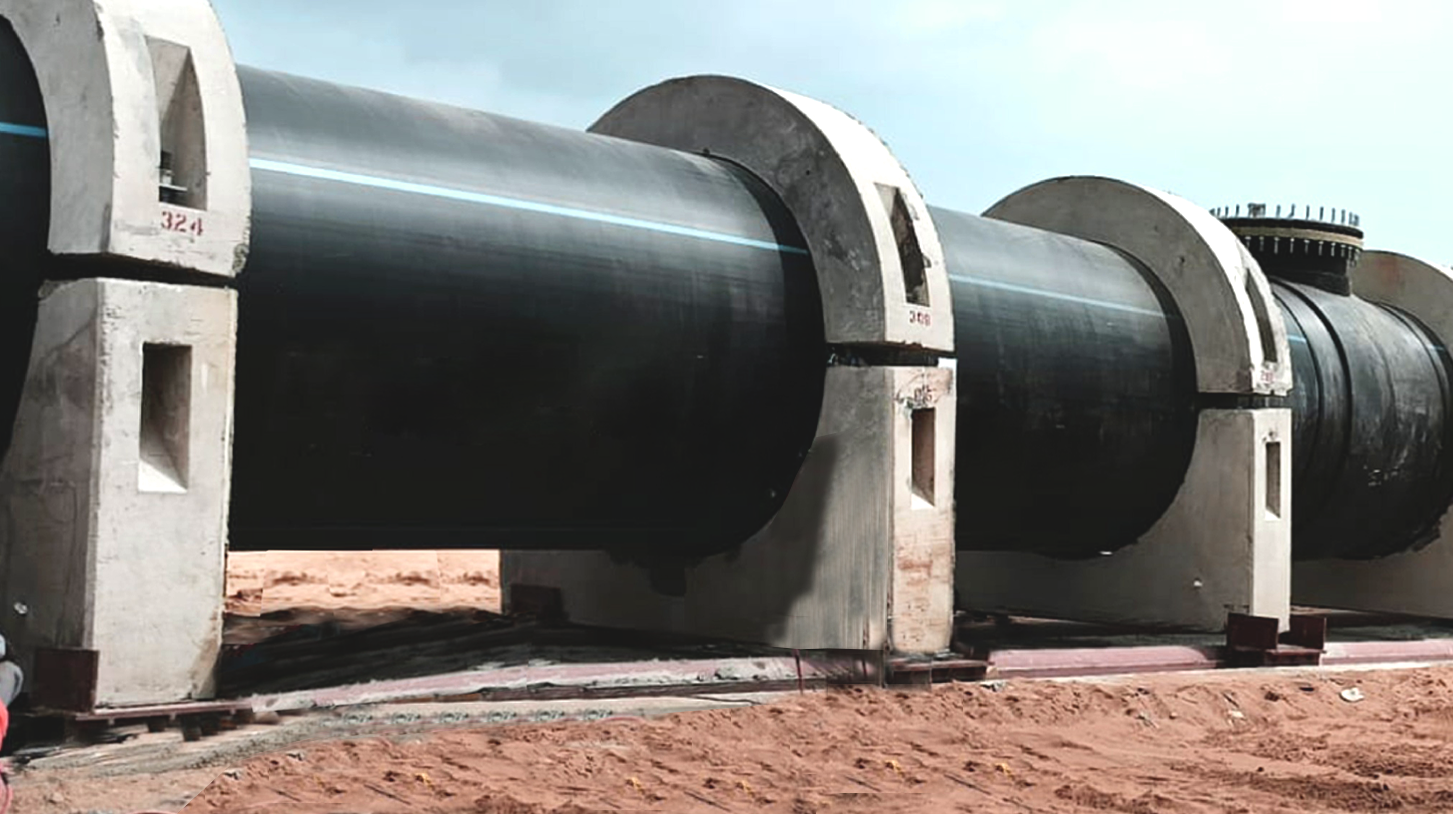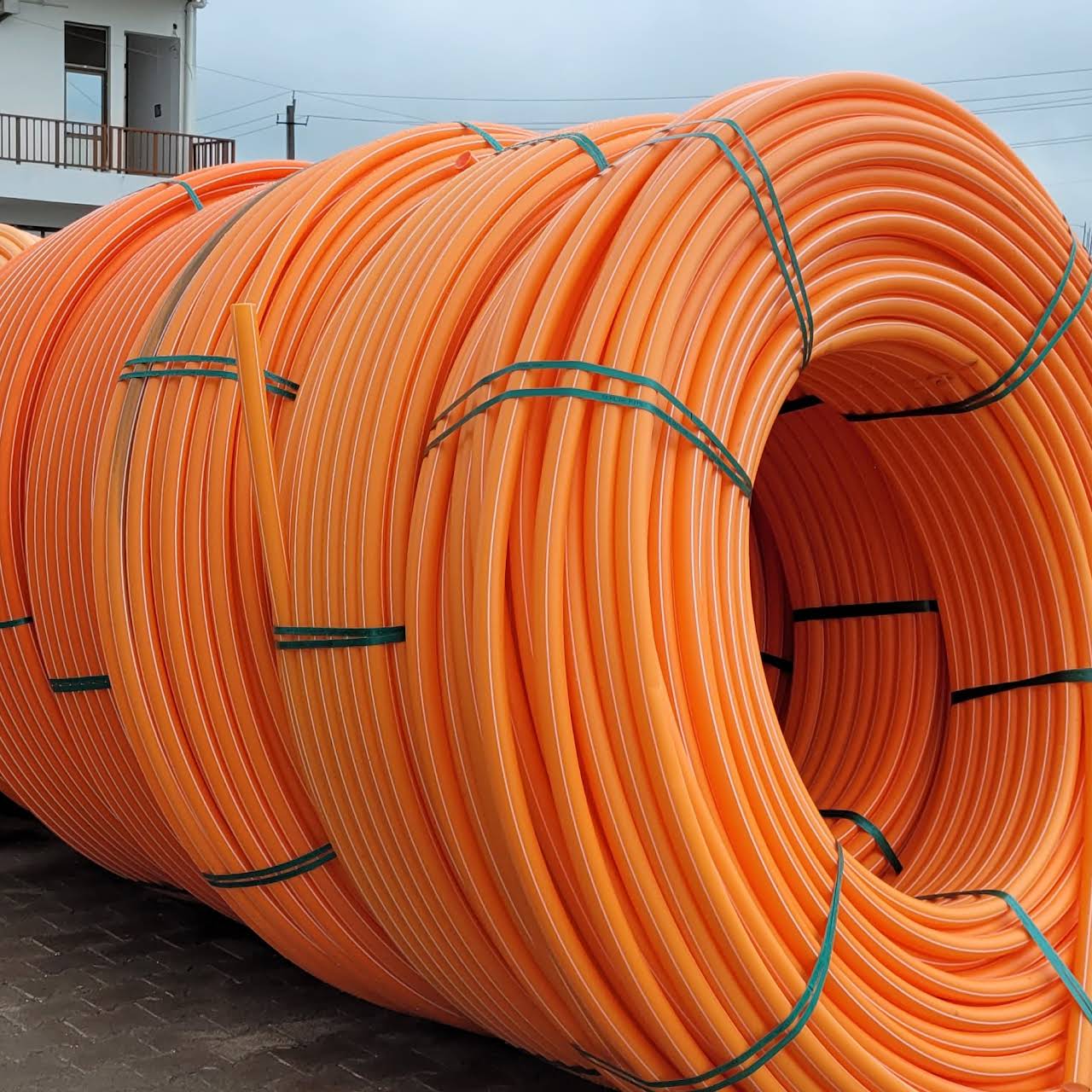How Midland TX HDPE Pipe Fittings in Stock Save Time
Wiki Article
Check Out the Manufacturing Refine Behind High-Quality HDPE Pipe and Its Applications
The manufacturing procedure of premium HDPE pipelines is detailed and systematic. It starts with the choice of basic materials that boost efficiency. Following this, ethylene undergoes polymerization to create resin, which is after that shaped through extrusion. Quality control is vital, guaranteeing that the end product meets strict standards. The trip of HDPE pipes does not end with manufacturing. Their applications across various sectors reveal a broader value worth taking a look at.Recognizing HDPE: Properties and Advantages

High-density polyethylene (HDPE) is a versatile polycarbonate recognized for its toughness and resistance to various ecological aspects. This product exhibits superb tensile toughness, making it ideal for requiring applications. Its low-density structure contributes to a lightweight product, assisting in simplicity of dealing with and setup. HDPE additionally showcases remarkable resistance to chemicals, which decreases degradation when exposed to rough materials.
The material's reduced dampness absorption better improves its durability, making it optimal for use in pipes and storage space containers. Additionally, HDPE is immune to ultraviolet (UV) radiation, ensuring that products maintain their integrity even when subjected to sunlight. Furthermore, its flexibility permits the development of intricate forms without jeopardizing stamina. The environment-friendly nature of HDPE, often originated from recycled products, includes to its appeal, advertising sustainable methods in manufacturing. In general, these homes and advantages make HDPE a recommended choice for numerous commercial and customer applications.
Raw Material Selection for HDPE Manufacturing
The choice of raw products for HDPE production is necessary to verify the final product meets the wanted requirements and high quality criteria. High-density polyethylene (HDPE) is primarily created from polymerized ethylene, stemmed from nonrenewable fuel sources such as all-natural gas or crude oil. The quality of these feedstocks considerably affects the mechanical and thermal residential properties of the final HDPE.Ingredients likewise play a considerable function in improving HDPE's efficiency, consisting of antioxidants, UV stabilizers, and colorants, which improve resilience and resistance to environmental variables. The selection procedure need to take into consideration not only the chemical make-up of the raw materials but additionally their processing features to assure reliable production.
The sourcing of raw materials must focus on sustainability and compliance with ecological laws, as liable techniques are imperative in today's market. Inevitably, mindful resources choice lays the structure for generating top notch HDPE pipelines appropriate for diverse applications.
The Extrusion Process: Shaping HDPE Pipeline
The extrusion process plays an essential duty in shaping HDPE pipes, beginning with careful material prep work methods that assure perfect flow and uniformity. Equally vital is the style of the die, which directly influences the final dimensions and surface top quality of the pipeline. With each other, these elements contribute greatly to the performance and top quality of HDPE pipeline production.Material Prep Work Strategies
Reliable production of HDPE pipes begins with careful material prep work methods, especially the extrusion process. During this phase, high-density polyethylene material is initial dried to eliminate dampness, ensuring perfect circulation qualities. The material is after that fed into the extruder, where it goes through heating and melting, changing into a thick state. This heating procedure is very carefully managed to preserve the material's honesty and efficiency. The molten HDPE is required through a die, shaping it right into a constant pipe type. Appropriate temperature management throughout extrusion is necessary, as it straight affects the material's buildings and the final item high quality. As soon as formed, the HDPE pipeline is cooled down and cut to specified sizes, prepared for subsequent processing and applications.Die Layout Value
Precision in die layout plays an essential function in the extrusion process of HDPE pipelines. The die functions as the last shaping device, directly affecting the pipe's measurements, wall density, and surface coating. A properly designed die warranties consistent material flow, reducing issues such as irregularities and vulnerable points. The geometry of the die have to be maximized to suit the certain residential or commercial properties of HDPE, including its thickness and thermal actions during extrusion. In addition, the cooling rate of the product as it travels through the die can significantly impact the pipeline's structural stability. Consequently, purchasing sophisticated die technology is crucial for producers intending to generate top quality HDPE pipelines that fulfill market criteria and customer assumptions.Quality Assurance Procedures in HDPE Manufacturing
Although numerous factors influence the top quality of HDPE pipeline manufacturing, efficient top quality control measures are crucial to guarantee uniformity and reliability in the end product. Secret top quality control methods consist of extensive product examination, validating that the raw polyethylene meets established standards for purity and thickness. During the extrusion procedure, criteria such as temperature level, stress, and cooling time are carefully checked to preserve dimensional precision and structural integrityOn top of that, post-production testing is important; producers commonly carry out hydrostatic examinations to examine the pipe's toughness and resistance to stress. Visual evaluations for surface issues better boost quality control. Certification from pertinent criteria organizations, like ASTM or ISO, provides an additional layer of trustworthiness. By carrying out these complete quality assurance measures, producers can decrease flaws, enhance efficiency, and make sure that the HDPE pipes meet the details demands of numerous applications, inevitably resulting in customer contentment and count on the product.
Applications of HDPE Pipe Across Industries
HDPE pipelines are utilized throughout numerous fields because of their sturdiness and flexibility. In water circulation systems, they ensure effective shipment, while in wastewater monitoring, they give trustworthy solutions for waste transportation. In addition, agricultural watering networks gain from HDPE's resistance to deterioration and versatility, making it an optimal selection for modern farming methods.
Water Distribution Systems
A considerable number of industries count on high-density polyethylene (HDPE) pipelines for effective water circulation systems. Understood for their toughness and resistance to rust, HDPE pipes are extensively made use of in community water networks, farming watering, and commercial applications. Their lightweight nature promotes very easy handling and installation, reducing labor expenses and time. Additionally, HDPE pipelines can suit various stress levels, making them ideal for both low and high-pressure systems. American Plastics HDPE Pipe for Oilfield. The flexibility of the product permits for seamless integration right into existing framework, lessening the need for considerable excavation. Furthermore, HDPE's resistance to chemical leaching warranties that the water delivered continues to be safe and tidy, making it a perfect choice for preserving the top quality of potable water across numerous marketsWastewater Administration Solutions
Efficient water circulation systems additionally lead the way for innovative wastewater administration options, where high-density polyethylene (HDPE) pipes play a substantial function. Popular for their durability and resistance to corrosion, HDPE pipelines are suitable for moving wastewater in numerous settings. Their versatility enables for easy installment in intricate environments, decreasing the demand for considerable excavation. Furthermore, HDPE's smooth indoor surface decreases friction, boosting circulation prices and effectiveness. These pipelines are likewise immune to chemical leaching, ensuring that contaminants do not endanger the surrounding atmosphere. Industries, districts, and here treatment centers significantly depend on HDPE pipes for their dependability and long life, making them a recommended option for modern wastewater administration systems. This adaptability underscores the critical relevance of HDPE pipes across numerous applications.Agricultural Watering Networks
Agricultural irrigation networks profit significantly from making use of high-density polyethylene (HDPE) pipelines, which give efficient and dependable water distribution to crops. HDPE pipelines are light-weight, making them easy to transport and set up, while their adaptability enables numerous configurations in varied terrains. These pipes show excellent resistance to rust, chemicals, and UV radiation, making certain sturdiness in severe agricultural environments. Furthermore, their smooth indoor surface decreases friction loss, optimizing water flow and lowering energy prices connected with pumping. The durability of HDPE pipes, often exceeding 50 years, contributes to decrease maintenance and replacement costs. Consequently, farmers increasingly depend on HDPE pipelines to boost watering performance and promote sustainable farming techniques, inevitably bring about improved plant returns and source preservation.Future Patterns in HDPE Pipe Innovation
As the need for sustainable and reliable infrastructure expands, advancements in HDPE pipeline innovation are poised to change different markets. Arising fads include the assimilation of wise modern technologies, such as sensors and IoT capabilities, which promote real-time monitoring of pipe problems, decreasing upkeep costs and protecting against leaks. Furthermore, the growth of advanced production techniques, such as 3D printing, is allowing the production of facility, tailored pipe layouts that accommodate specific task requirements.Additionally, the focus on recycling and round economy methods is driving the technology of HDPE pipes made from recycled materials, enhancing sustainability. Enhanced jointing approaches, such as electro-fusion and mechanical fittings, are additionally improving installment efficiency and reliability. The growing emphasis on environmental guidelines is pushing producers to take on greener production processes, guaranteeing that HDPE pipelines not only satisfy sector requirements however additionally promote an even more lasting future for infrastructure development.
Frequently Asked Questions
Just How Does HDPE Compare to Other Plastic Materials?
HDPE exceeds numerous various other plastic products regarding sturdiness, chemical resistance, and flexibility. Its low density and high tensile strength make it excellent for different applications, typically going beyond alternatives in both efficiency and durability.What Are the Environmental Impacts of HDPE Manufacturing?
The ecological effects of HDPE production consist of greenhouse gas discharges, energy intake, and possible air pollution from producing procedures. Furthermore, improper disposal can lead to dirt and water contamination, increasing issues regarding lasting ecological impacts.Can HDPE Pipes Be Reused?
Yes, HDPE pipes can be reused. Lots of centers accept made use of HDPE for processing, changing it into brand-new products. This reusing contributes to sustainability initiatives, minimizing plastic waste while preserving resources and power in the production cycle.What Is the Life-span of HDPE Piping?

Just How Do Temperature Variants Affect HDPE Pipeline Efficiency?
Temperature level variations greatly influence HDPE pipeline performance, influencing versatility and strength. High temperature levels can result in softening, while reduced temperature levels may trigger brittleness, eventually influencing the pipeline's durability and viability for numerous applications in varied settings.Report this wiki page